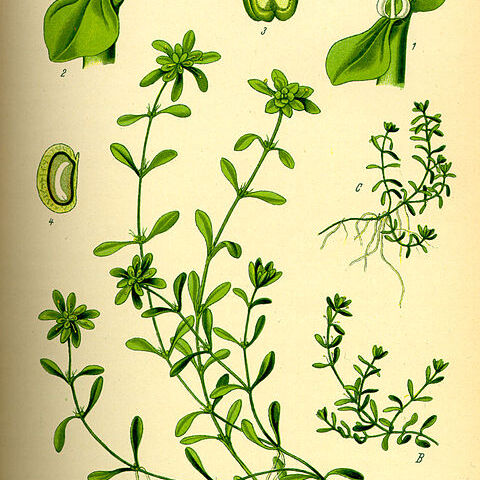Delicate, annual or perennial herbs, aquatic and then either entirely submersed, or floating in the upper part, or, in humid localities, not rarely terrestrial and creeping, with slender stems. Leaves opposite, at the summits of floating stems often spuriously rosulate, exstipulate, small, linear, elliptic, oblong or spathulate, entire, herbaceous, in the Mal. sp. triplenerved. Flowers minute, unisexual, axillary, solitary or rarely one ‚♂ and one ♀ flower from the same axil, often with 2 caducous, transversal, opposite, tender concave bracts. Calyx and corolla absent. ♂: Stamen 1; filament thin, anther 2-celled, cells bursting lengthwise, the slits becoming con-fluent at the top. ♀: Ovary sessile or subsessile, 4-lobed, 4-celled. Ovule solitary in each cell, pendulous from the top of the cavity. Styles 2, free, often long, papillose. Fruit 4-lobed, with longitudinally margined or winged lobes. Testa membranous; endosperm fleshy; embryo terete, straight.
Submerged lvs usually linear; floating lvs and those of terrestrial plants narrow-spathulate to ovate, often forming a terminal rosette.
Morphological characters and geographical distribution are the same as those of the family.
Characters of the family. 35, nearly cosmop.
Characters of the family.

